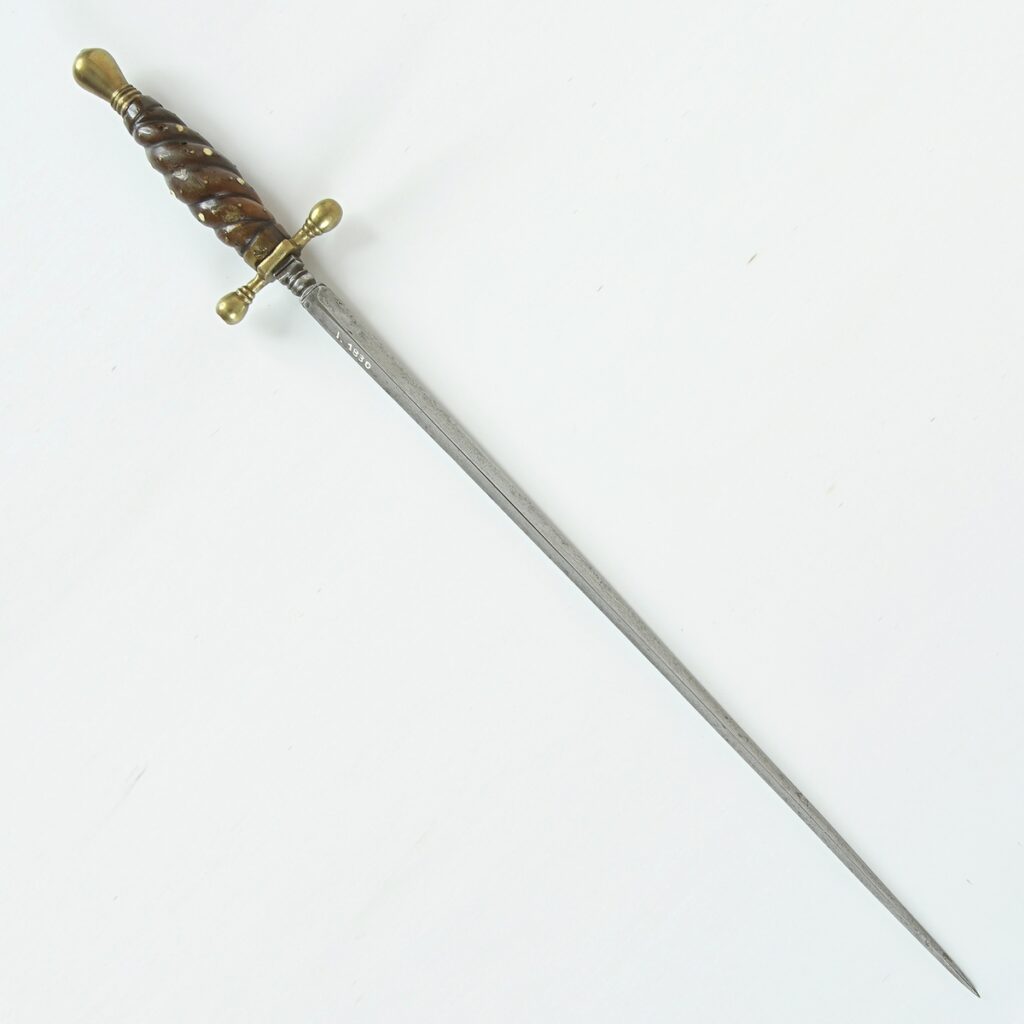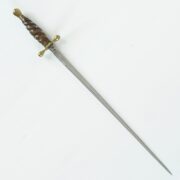
07 Gunner's Stiletto, Central Europe, c. 1700
Fotogalerie




The stiletto, a short dagger with a solid, narrow-pointed blade, often triangular or quadrangular in cross-section, gained popularity especially in the 16th century and remained popular for about 150 years. In southern Europe, stilettos became popular at times when the carrying of weapons was prohibited by law. The slender blade of the stiletto could be concealed in clothing or hollow sticks without much difficulty, as became common practice in Europe.
At the end of the 17th century, the stiletto, until then known as a civilian weapon, became an important tool for artillerymen. The blades of stilettos used to have a scale engraved on them. It was used to measure the calibre of the guns or to determine the required charge of gunpowder. In addition to the artillery stiletto, an engineering stiletto was also used, divided in the longitudinal axis into two parts, connected by a pin at the head. This modified stiletto served as a compass for measuring lengths.
Length 566 mm, blade length 435 mm, blade width 14 mm, weight 330 g.
Aktuálně

Oceňovaní spojenci - Pozemní útvary československé branné moci v bitvě o Francii očima francouzského velení

Vánoce a přelom roku v zahraniční misi na Slovensku v roce 2022

Prosinec 1944 – oficiální vydání prvních poštovních známek osvobozeného Československa









